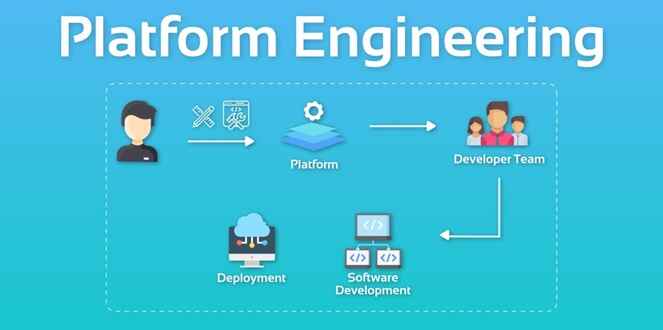Software development has become increasingly complex. Modern applications often involve intricate microservices architectures, cloud infrastructure, and a plethora of development tools. Managing this complexity can be a significant burden for development teams, slowing down their velocity and hindering innovation. This is where platform engineering comes in. Platform engineering is emerging as a critical discipline that aims to simplify the development experience and empower teams to focus on building great software. This blog explores the rise of platform engineering, its benefits, and how it’s transforming the software development landscape.
What is Platform Engineering?
Platform engineering is the practice of building and maintaining internal developer platforms. These platforms provide self-service infrastructure, tools, and standardized workflows, abstracting away the underlying complexity of the development environment. Think of it as creating a “paved road” for developers, allowing them to easily deploy and manage their applications without getting bogged down in infrastructure details. Instead of spending time configuring servers, setting up monitoring, or managing deployments, developers can leverage the platform’s pre-built components and automation to quickly and efficiently deliver value. This often involves working with a bespoke software development company that can create tailored platforms to meet the specific needs of the organization.

Why is Platform Engineering Important?
The increasing complexity of software development has created a growing need for platform engineering. Developers are spending more time than ever managing infrastructure, dealing with dependencies, and navigating a complex ecosystem of tools. This not only slows down development cycles but also increases the risk of errors and inconsistencies. Platform engineering addresses these challenges by:
- Reducing Cognitive Load: By abstracting away the underlying infrastructure, platform engineering reduces the cognitive load on developers, allowing them to focus on writing code and building features.
- Improving Developer Productivity: Self-service tools and automated workflows empower developers to quickly deploy and manage their applications, significantly increasing their productivity.
- Enhancing Developer Experience: A well-designed platform provides a seamless and intuitive development experience, leading to happier and more engaged developers.
- Promoting Standardization: Platform engineering promotes the use of standardized tools and processes, ensuring consistency and reducing the risk of errors.
- Accelerating Time to Market: By streamlining the development process, platform engineering helps organizations bring their products to market faster.
Key Components of a Developer Platform
A typical developer platform includes a range of components designed to simplify the development process. These can include:
- Infrastructure as Code (IaC): Tools for managing and provisioning infrastructure through code, enabling automation and consistency.
- Continuous Integration/Continuous Delivery (CI/CD) Pipelines: Automated workflows for building, testing, and deploying software.
- Monitoring and Observability Tools: Systems for tracking application performance and identifying potential issues.
- Self-Service Portals: User-friendly interfaces for developers to access resources and manage their applications.
- Security and Compliance Tools: Integrated security measures to ensure that applications are built and deployed securely.
Building a Successful Platform Engineering Strategy
Building a successful platform engineering strategy requires careful planning and execution. Organizations should:
- Define Clear Goals: Start by defining the specific challenges that the platform is intended to address and the desired outcomes.
- Focus on Developer Needs: The platform should be designed with the needs of developers in mind, providing them with the tools and resources they need to be successful.
- Iterate and Improve: Platform engineering is an ongoing process. Organizations should continuously gather feedback from developers and iterate on the platform to ensure that it meets their evolving needs.
- Invest in Training and Support: Developers need to be trained on how to use the platform effectively. Providing ongoing support is also crucial for ensuring adoption.
The Role of Quality and Testing
As platform engineering simplifies development and accelerates delivery, ensuring software quality becomes even more critical. Integrating testing and quality assurance throughout the development lifecycle is essential for preventing bugs and ensuring that applications meet the required standards. This is where software quality assurance companies can play a vital role. They can help organizations implement robust testing strategies, automate testing processes, and ensure that software is delivered with the highest quality.
The Future of Platform Engineering
Platform engineering is still a relatively new discipline, but it is rapidly gaining traction. As software development continues to evolve, platform engineering will become even more important for enabling organizations to build and deliver high-quality software at scale. We can expect to see further advancements in platform engineering tools and techniques, making it even easier for organizations to build and maintain internal developer platforms.
Conclusion: Empowering the Next Generation of Software Development
Platform engineering is transforming the software development landscape by empowering development teams to focus on what they do best: building great software. By simplifying the development experience, improving productivity, and promoting standardization, platform engineering is enabling organizations to accelerate innovation and bring their products to market faster. As the complexity of software development continues to grow, platform engineering will play a crucial role in shaping the future of software development.














